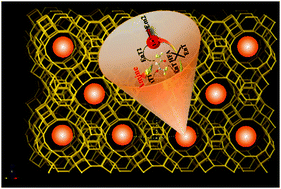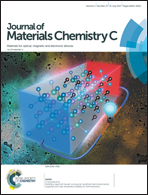Colorimetric sensor arrays for amines based on responsive lanthanide complex entrapment†
Abstract
Herein a small sensor array (or artificial tongue) generated by three sensing elements (Eu0.5Tb9.5(HFA)n@ZY, Eu1Tb9(HFA)n@ZY, Eu2Tb8(HFA)n@ZY, HFA: hexafluoroacetylacetonate) obtained by encapsulating Eu–Tb binuclear complexes within the cavities of zeolite Y (ZY) has been demonstrated, which can accomplish the accurate identification for a group of 13 different amines. For each amine, the sensor array generates a unique response pattern, which can be used as a fingerprint to discriminate the 13 amine molecules. Additionally, this sensor array has the ability to distinguish between the isomers of some amines. Such work offers a new direction for developing sensitive array sensing for multi-analyte systems and isomers.



 Please wait while we load your content...
Please wait while we load your content...